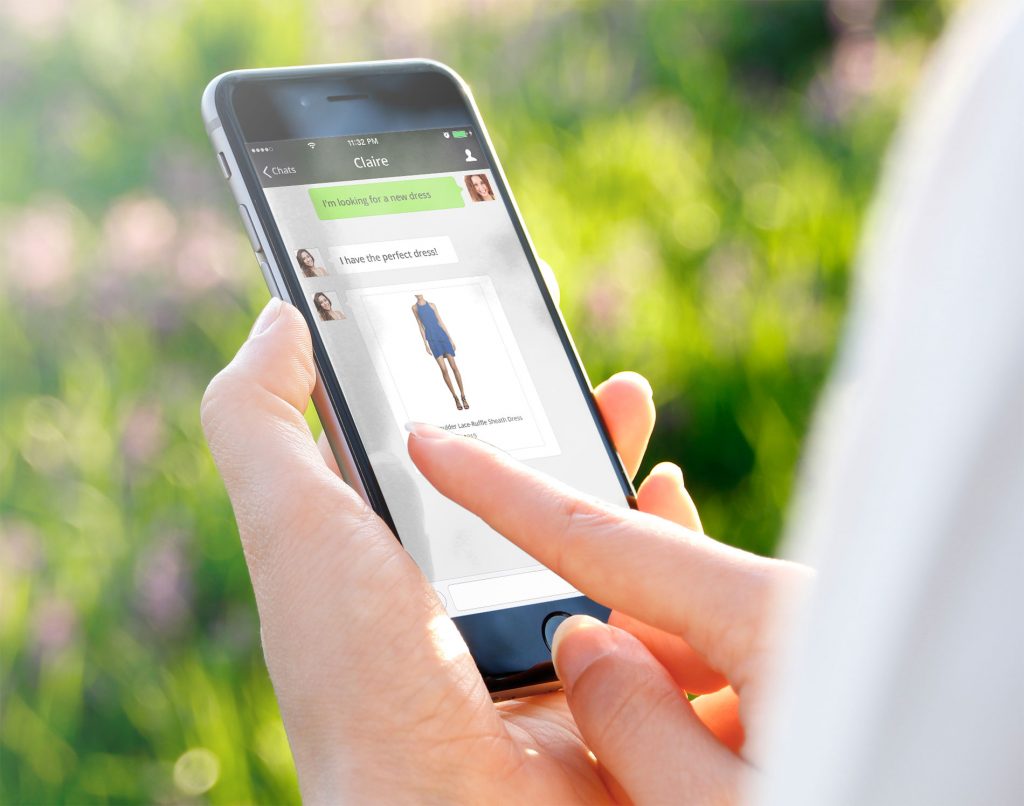Successful retailers nowadays know that social commerce is anything but a passive exercise. It’s no longer enough to post a marketing asset or two on Pinterest and wait for the masses of would-be customers to trickle in, or barge down your doors, as the case may be. It’s not news that the best-conceived social commerce strategies are those that take a consistently proactive and multifaceted approach to engaging customers.
Asian social media platforms like WeChat and Weibo are the new normal and growing in popularity in North America, which means retailers need to pay close attention. It’s predicted that by 2020, Chinese social media use will hit 647 million active users, rendering a presence on these local platforms an absolute must for brands wanting to connect with the upscale Asian market. WeChat and Weibo have 938 million and 340 million active monthly users respectively.
There’s no denying that WeChat has transformed Asia’s digital landscape: the average user spends 70 minutes a day on the app. Blending facets of Facebook, WhatsApp and Instagram, it also offers an integrated payment system. People can use it to book taxis, order takeout, buy clothes, or pay bills. Although some brands sell directly on WeChat, many major brands instead use it to seamlessly guide people onto their own online shopping platforms.

Retailers seeing success with WeChat & Weibo
Clothing Advisors at Harry Rosen realized they lacked strategies to reach this influential and growing market. Recognizing the importance of Asian social media, they developed a strategy for their sales associates: take advantage of Weibo and WeChat and use them as key selling tools. Customers can chat directly with Clothing Advisors who send them clickable images of exactly what they’re looking for. They can also follow up after a customer leaves the store by texting items they tried on, new arrivals they might like, or even getting in touch on the customer’s birthday to offer them the deals of the day.
When Harry Rosen launched accounts on both platforms in 2016, they enabled their Clothing Advisors the flexibility to use them to promote and sell products while still retaining ownership of the customers and their experiences. Results have been both incredibly positive and unprecedented: Advisors are using the platforms to successfully engage Asian customers. The fact that 30% of online requests Harry Rosen receives come in via text indicates that a growing number of their customers prefer being contacted this way. Clothing Advisors at Harry Rosen are adapting to their customers’ preferences by reaching out to Chinese customers via WeChat and Weibo and inviting them to celebrate Chinese New Year in-store (a decade-old tradition of theirs), or to recommend holiday-relevant products. Retailers need follow suite and prioritize adapting to their customers’ preferred modes of communication.
As a multi-brand department store, Bloomingdale’s has no equivalent in China. Hot Pot Digital is Bloomingdale’s retained China digital agency: its strategy, content and engagement campaigns on Weibo and WeChat have become an essential part of the store’s international tourism marketing efforts.
“Western retailers such as Bloomingdale’s have noticed a surge in Chinese retail tourism in the past few years that is substantially bolstering their top line in primary American and European markets,” says Brian Buchwald, co-founder of luxury retail-oriented digital platform Bomoda.
British luxury leather brand Mulberry, understanding the need to make a digital impact, let loose their marketing campaign for Qixi Festival, or Chinese Valentine’s Day, in August 2015. Called “Mulberry Love Letters,” the Online to Offline campaign allows Chinese people based all over the world to send heartfelt messages over WeChat, which could then be transformed into a custom image for the recipient. To bring people into their stores, Mulberry promised a selected number of recipients the opportunity to take their digital love letter into one of the participating shops in Shanghai, Beijing, London, Paris, New York, and Toronto to receive a handcrafted leather bracelet that could be customized.
There is much to be learned from WeChat and Weibo when it comes to the future of social commerce. Other retailers currently using taking advantage of this learning opportunity include Saks Fifth Avenue and Lord & Taylor.
The current face of influencer marketing
The fact that a retailer’s associates are its most powerful influencers is at the heart of the social strategy. Many retailers are making it possible for their stores and associates to engage with customers using Weibo and WeChat along with numerous other platforms. By adopting these strategies, retailers are able to take a good look at the opportunities surrounding influencer marketing–specifically how store associates and non-store influencers alike can engage customers and compel them to buy online as well as shop in-store. Any retailer working to integrate clickable products with in-person visits, expressed customer interests, and/or interactions with one’s personal, locally based associates is on the cutting edge as well as on the right track.
Retail industry leaders are learning that successfully tapping into the Asian market means significant profit. Adopting emerging marketing methods like WeChat and Weibo is an incredible way for your knowledgeable associates to tap into the power of the Asian market by making one’s business fully reachable, visible, and clickable on its most frequented platforms. Retailers ready to take the plunge should consider implementing a mobile application that allows sales associates (or Clothing Advisors, as the case may be) to text integrated products directly to happy customers.
Here’s to the continual evolution of effective marketing, AKA reaching people.

